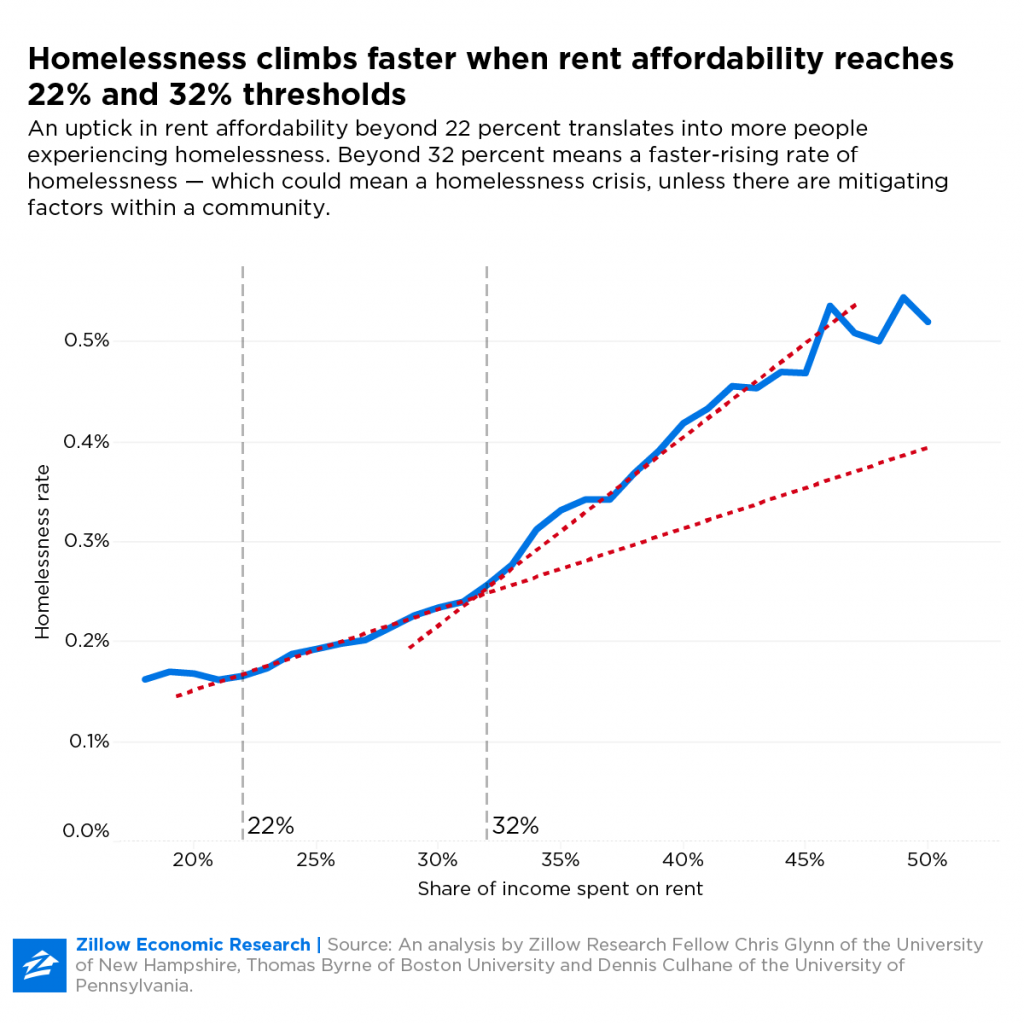This is the critical number that shows when housing breaks down

Seeking shelter: A homeless man in a London underground station
Image: REUTERS/Mary Turner
Stay up to date:
Economic Progress
How much of your income do you spend on your rent?
The answer probably depends on where you live. Rents can vary wildly from country to country, city to city and even within regions.
While it probably won’t be news that people living in cities generally spend a higher proportion of their income on rent, new research directly links rent affordability to homelessness and highlights the lack of consistent data on the topic.

The critical threshold is 32%, with the report showing that American communities where people spend more than that percentage of their income on their rent can expect a more rapid increase in homelessness. The academics, working with online real-estate company Zillow, also estimate that the scale of homelessness in the US has been undercounted by around 20%.
While the work underscores the idea that there's no one-size-fits-all approach when it comes to tackling homelessness, it does offer policymakers a way to quantify and anticipate when dynamics may be shifting. Since the median US rental takes 28% of earnings, monitoring how the levels are evolving could help to flag up looming problems.

“It’s not appropriate to say we don’t have a problem until we hit 32%,” said Chris Glynn, a Zillow Research Fellow and an Assistant Professor of Decision Sciences at the University of New Hampshire. “It’s time to start thinking about when you will hit that threshold, and what will happens afterward and taking a proactive approach, thinking about the trajectory of your affordable housing.”
Hard to measure
Around 150 million people, or about 2% of the world’s population, are homeless, according to Yale University, and a further 1.6 billion, more than 20%, may lack adequate housing. Since obtaining accurate numbers is difficult, primarily because of variations in the way homelessness is defined, the numbers could be higher.
The Zillow academics estimated the true level of homelessness in the US was 20% greater than the official count, and said there was wide variation across the country. In Los Angeles and San Francisco rent affordability has been well beyond the “crucial benchmark” of 32% of income for decades.
While this research focused on the US, homelessness is a problem for every country.
Tenants in England paid an average of 27% of their gross salary to their landlord in 2016, according to data from the Office for National Statistics. That data also shows regional variation, with tenants in London spending nearly half of their salary on rent, while in northern England, the number was much lower at 23%.

A number of factors can push people into homelessness, including “shortages of affordable housing, privatization of civic services, investment speculation in housing, unplanned and rapid urbanization, as well as poverty, unemployment and family breakdown,” says Joseph Chamie, an independent consulting demographer and a former director of the United Nations Population Division. “Also contributing is a lack of services and facilities for those suffering from mental illness, alcoholism or substance abuse and displacement caused by conflicts, natural disasters and government housing policies.”
Drawing international comparisons can be challenging because of the different ways it is measured. Among OECD countries, Australia, the Czech Republic and New Zealand report a relatively high level of homelessness, but this is partly explained by the fact that they have a broad definition.
In Australia people are considered homeless if they have “no other options to acquire safe and secure housing, are without shelter, in temporary accommodation, sharing accommodation with a household or living in uninhabitable housing”.

In contrast, the OECD country with the smallest share of homeless people is Japan – 0.004% of the population in 2015 – where figures only refer to rough sleepers.
For policymakers around the world, solving the challenge might mean rethinking ways we live and work or using technology to improve transit.
With the UN predicting that 68% of the global population will live in cities by 2050, innovation and technology can be harnessed to this end, and that’s one of the areas being explored by the World Economic Forum’s Global Future Council on Cities and Urbanization.
Don't miss any update on this topic
Create a free account and access your personalized content collection with our latest publications and analyses.
License and Republishing
World Economic Forum articles may be republished in accordance with the Creative Commons Attribution-NonCommercial-NoDerivatives 4.0 International Public License, and in accordance with our Terms of Use.
The views expressed in this article are those of the author alone and not the World Economic Forum.
Forum Stories newsletter
Bringing you weekly curated insights and analysis on the global issues that matter.
More on Economic GrowthSee all
Julia Hakspiel
June 17, 2025
Swapan Mehra and Akim Daouda
June 16, 2025
Aengus Collins
June 12, 2025
John Letzing
June 11, 2025
Valentina Vellinho Nardin
June 10, 2025
Spencer Feingold
June 10, 2025





